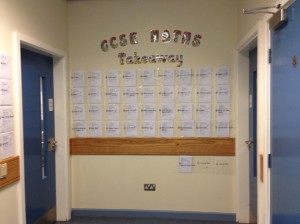Poundland Pedagogy – from Fran in RE. Thanks, Fran!
Poundland Pedagogy is an idea that comes from Isabella Wallace (author of ‘Pimp your lesson!’ and ‘Talk- less teaching’) and involves using items found in Poundland (other discount stores are available) to support learning and progress. It involves going for a wander through the shelves and thinking about how you can use them items found as resources in activities. It does require careful planning about how items can be used and how it will support progress, but it can also be used to great effect to engage students and support their learning.
The internet is full of ideas and uses, googling ‘poundland pedagogy’ brings up a multitude of ideas, a quick look at #poundlandpedagogy on Twitter or the many Poundland Pedagogy boards on Pinterest are also full of ideas. I have found that the best starting point is to find the items, and then work out how you could use them.
My recent uses of items found in Poundland include using paper table cloths and cheap felt tip pens for year 9 to recap their previous learning, giving year 10 playdoh to model key concepts and using a washing line, pegs and paper doilies to create a timeline of religious changes so that year 7 can see what changed and what stayed the same. In the near future I am planning to use a blow- up beach ball covered in sticky notes to randomise questioning, balls of string to track who has made a contribution to table discussions and fly swatters to make a key word revision game.
Using items from discount stores won’t automatically make lessons engaging and ensure that students make rapid progress. However using items to structure and resource learning activities can provide a hook or a way of making learning accessible.







